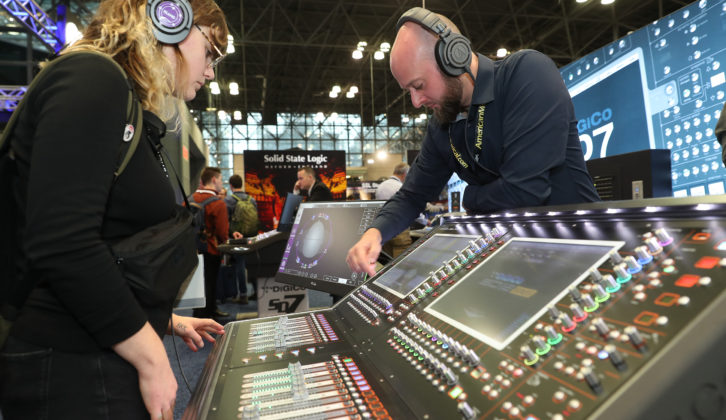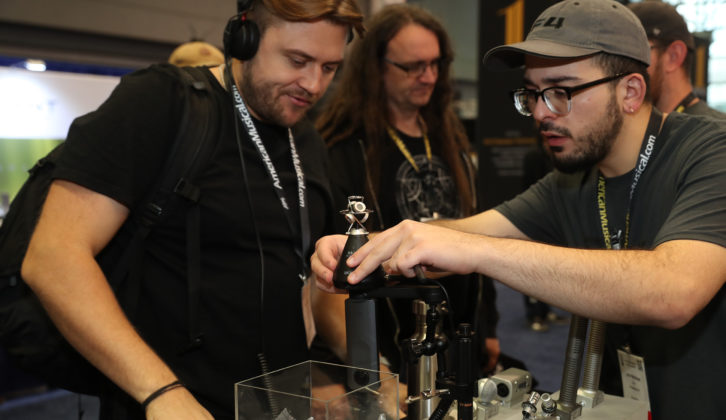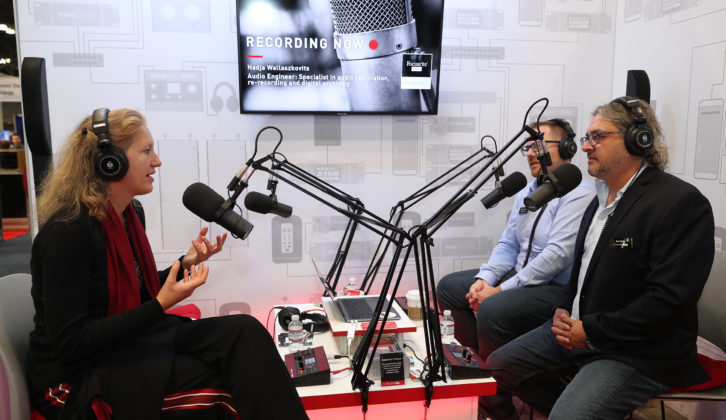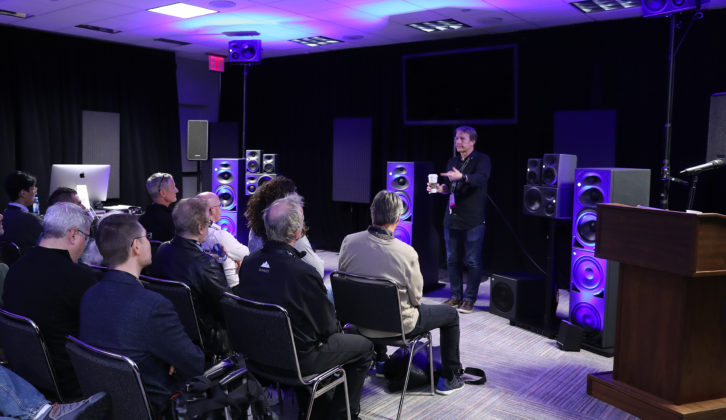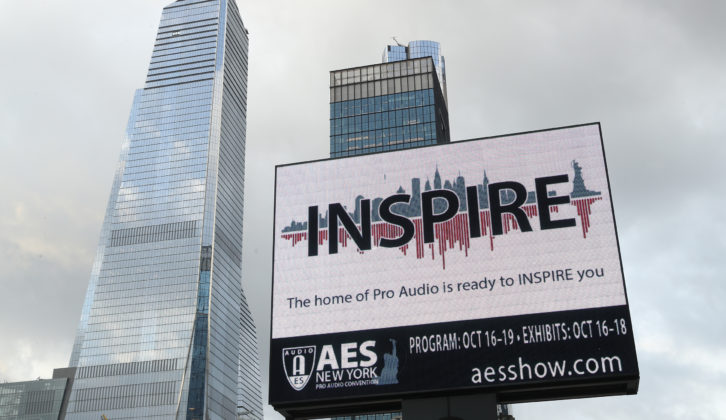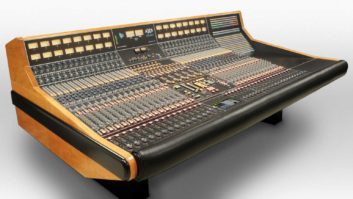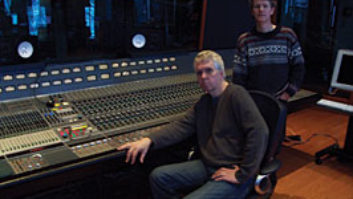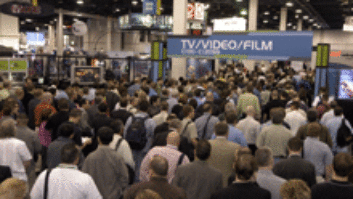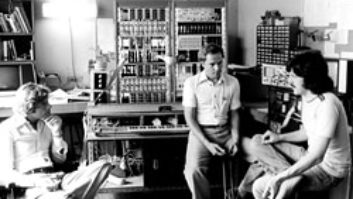When I think back to when the AES show was held in New York City’s Waldorf Astoria Hotel—the last time was 1981’s 70th AES Convention—my most prominent memory is … the world’s slowest elevators. The second thought is that AES then wasn’t about new product introductions—it was about new technology introductions and technical papers. Although new products were a part of the picture, the context was always engineering, and white papers were the stars of the show.
With the Winter NAMM show now crushing everything in its path (even the Frankfurt Musikmesse) when it comes to product introductions, AES has returned to its roots. And that made sense—the theme of the Product Development Track at this year’s AES show was “The New Era of Product Development,” not “The Era of New Product Introductions.”
At every convention, AES gives us a sneak peek into the future. The big news in software this year was greater intelligence, both artificial and otherwise. Companies like iZotope have been applying AI to their software for a while, and machine intelligence continues to enhance iZotope’s flagship product, Ozone 9. For example, Ozone’s Master Assistant function has been revamped; that functionality sits alongside an enhanced Tonal Balance Control module (which adjusts tracks to reference targets) and a Low End Focus tool that fixes low-frequency issues. While iZotope doesn’t claim that its goal is to replace mastering engineers—it isn’t—AI can provide a point of departure that ultimately saves time for professionals, and helps others achieve better mastering results.
Gallery: Technology Highlights of AES 2019
John Staley
John Staley
John Staley
John Staley
Sonnox’s Oxford Drum Gate is also representative of the new genre of AI-driven software. Unlike a “dumb” gate that bases its decisions solely on signal amplitude, the Drum Gate can analyze a drum track, and isolate a specific drum for gating/replacement based on how it conforms to parameters that define particular drum sounds.
Related: Is AI Taking Over? Not So Fast, Dude, by Steve Harvey, Oct. 17, 2018
Not everything is about technological advances, though; sometimes it’s about streamlining workflow. As podcasting continues to gain momentum, Zoom has addressed that market with LiveTrak L-8. In a way, it adapts TASCAM’s original Portastudio concept to podcasting—it’s primed for portable, being lightweight, petite and battery-powered. Its design addresses the needs of podcasters, offering four headphone outs and six mic inputs for roundtables and panel discussions, as well as the ability to route audio to individual tracks on the internal SD card for post-show editing. It features six “sound pads” that may be mapped to audio samples (jingles, sonic logos, sound effects, etc.), and hooks into smartphones—with a mix-minus function for interviews, and the ability to grab audio from the internet.
Resurrections were also big this year. SSL’s Origin is a $50,000, all-analog, 32-channel, large-format console with “the SSL sound.” You won’t find automation—why bother with today’s DAW-based studios?—but you will find a rack-based modular center section you can customize with controllers, computer keyboards, hardware processing and the like.
Related: BandLab Rescues Cakewalk with Acquisition, by Clive Young, Feb. 27, 2018
Two years after its intellectual property was resurrected from Gibson, Cakewalk was back at AES. Development has been ongoing, with significant workflow changes, inclusion of Zplane audio stretching, and fixes for the bugs that some felt always held Cakewalk back.
Nugen Audio has updated its SigMod routing/processing plug-in so it can host VST2 and AU plug-ins. Granted, the concept isn’t new—Blue Cat Audio’s Patchwork can load VST and AU plug-ins in AAX-only Pro Tools systems, as can Peavey’s ReValver and DDMF’s Metaplugin—but SigMod is about more than wrapping plug-ins, so the expanded capabilities are welcome.
Frankly, I was expecting to hear more about audio for virtual reality and games. Are we about to see yet another VR false start? Maybe, but Oculus Quest—which doesn’t need a computer or wires, and can be set up anywhere—could be the hardware that will break VR open. And if it does, Zylia will be ready with the 6DoF development kit, which allows capturing ambisonic sound in multiple points within a recorded scene. The object is to provide the sound recording and playback capabilities needed for immersive sound in a 3D audio/video environment, based on their ZM-1 3rd order Ambisonics mic arrays.
Related: Capturing Concerts for VR, by Alvin Fernald, Aug. 26, 2019
Finally, note that the Anderton Awards (an AES show wrap-up that mixed alleged humor with genuine respect for cool products) is no more. Hey—stop cheering! You’re not getting off that easy. With NAMM now the epicenter of product introductions, the Anderton Awards will be moving to Anaheim. See you there!
Craig Anderton’s free educational website, craiganderton.org, is now online as a companion to the craiganderton.com digital storefront.
